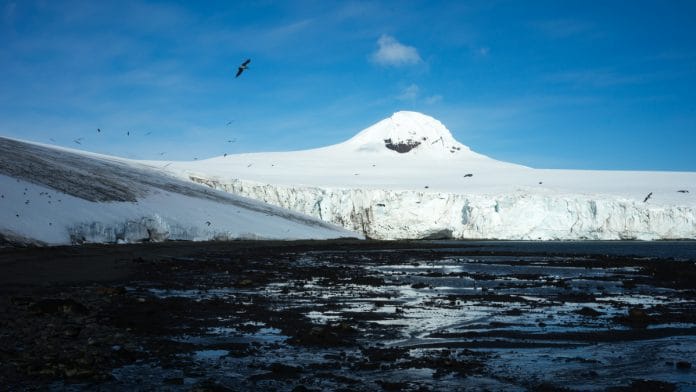Bengaluru: The annual melting rate of global ice has accelerated rapidly and seems in line with the worst-case scenarios predicted by the Intergovernmental Panel on Climate Change (IPCC), new findings showed.
The peer-reviewed findings, made by researchers from the UK and published in European Geosciences Union’s journal The Cryosphere, is one of the first comprehensive analyses of all of global ice loss.
Excluding permafrost and winter snowfall on land, the survey covered all of the planet’s ice — 215,000 mountain glaciers across the planet, the polar ice caps, ice sheets in both Greenland and Antarctica, ice shelves in the Arctic and Antarctic, as well as sea ice in the polar regions.
Previous research has focussed on specific kinds of ice or icy structures like simply glaciers or polar caps.
Based on satellite and in situ data, the findings showed that melting around the world grew from 0.8 trillion tonnes in the 1990s to 1.3 trillion tonnes by 2017, covering a time period that included the warmest 20 years on record as well as steadily increasing average temperatures every year and decade.
It also revealed that the Earth lost 28 trillion tonnes of ice between 1994 and 2017 — equivalent to a sheet of ice 100 metres thick covering the whole of the UK.
Over the four decades studied, ice loss accelerated at the rate of 57 per cent. Half of all ice was lost from land, and the melting of ice is thought to have raised sea levels by 3.5 cm already.
Current IPCC projections state that the sea level rise in this century could be limited to 26-55 cm if emissions are cut drastically and global temperatures rise by less than 1.5 C since pre-industrial times. But if emissions remain high, and temperatures exceed 2 degrees Celsius rise, sea levels are expected to rise by 52-98 cm.
Multiple studies have since indicated that IPCC’s worst case estimates are still too conservative. IPCCs projections for degrees of sea level rise are based on a range of known factors, but exclude unknown and less understood factors like cloud cover modelling.
Also read: Cancer cases needing surgery to rise by 5 million by 2040 globally — Lancet Oncology study
What the findings show
The survey found that during the past four decades, every category of ice formation across the globe lost large quantities of ice.
The Arctic Sea ice saw a loss of 7.6 trillion tonnes, Antarctic ice shelves 6.5 trillion tonnes, mountain glaciers 6.1 trillion tonnes, the Greenland ice sheet 3.8 trillion tonnes, the Antarctic ice sheet 2.5 trillion tonnes, and the southern ocean sea ice (surrounding Antarctica) 0.9 trillion tonnes.
While the ice loss from the northern hemisphere was 58 per cent, the southern hemisphere lost 42 per cent ice.
Additionally, the melting accelerated the fastest for the Greenland and Antarctic ice sheets, the research found.
The study also found that 68 per cent of ice loss — from Arctic sea ice, mountain glaciers, ice shelf calving, and ice sheet surfaces — was caused by heating of the atmosphere.
The remaining 32 per cent of loss, mainly of ice sheets and ice shelves, was driven by the warming of the oceans.
The melting damage
Melting of ice across the globe triggers a positive feedback loop where some melting of ice causes further melting.
Ice is white in colour, and thus acts like a giant umbrella around earth, reflecting a large portion of the sun’s light and heat. As ice melts, this albedo, or reflectivity, is lost, leading to increased absorption of heat by the darker waters or land underneath. This subsequently leads to a more accelerated melting of remaining ice.
The polar ice sheets of the world store more than 99 per cent of the earth’s freshwater ice on land, and consequences of such rapid and accelerated melting of ice is expected to raise sea levels drastically within this century.
These changes are expected to lead to increased freak and extreme weather events, excessive flooding, disturbances in oceanic currents, and a disruption in the earth’s natural water cycle.
Also read: TB kills as many people as Covid. Let’s find a better vaccine







Please share the detailed report with exact findings and the differences before and now..
Also please share the cyclic nature findings as well.